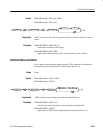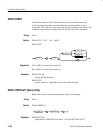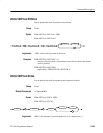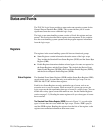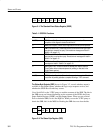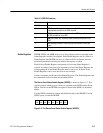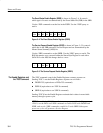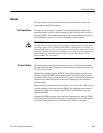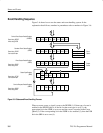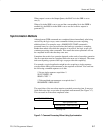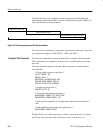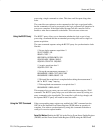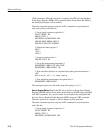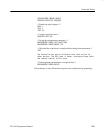
Status and Events
3–4
TLS 216 Programmer Manual
The Event Status Enable Register (ESER) is shown in Figure 3–4. It controls
which types of events are summarized by the Event Status Bit (ESB) in the SBR.
Use the *ESE command to set the bits in the ESER. Use the *ESE? query to
read it.
PON URQ CME EXE DDE QYE RQC OPC
76543210
Figure 3–4: The Event Status Enable Register (ESER)
The Service Request Enable Register (SRER) is shown in Figure 3–5. It controls
which bits in the SBR generate a Service Request and are summarized by the
Master Status Summary (MSS) bit.
Use the *SRE command to set the SRER. Use the *SRE? query to read it. The
RQS bit remains set to one until either the Status Byte Register is read with a
Serial Poll or the MSS bit changes back to a zero.
— — ESB MAV — — — —
76543210
Figure 3–5: The Service Request Enable Register (SRER)
The *PSC command controls the Enable Registers contents at power on.
Sending *PSC 1 sets the Enable Registers at power on as follows:
H DESER 255 (equivalent to a DESe 255 command)
H ESER 0 (equivalent to an *ESE 0 command)
H SRER 0 (equivalent to an *SRE 0 command)
Sending *PSC 0 lets the Enable Registers maintain their values in nonvolatile
memory through a power cycle.
NOTE. To enable the PON (Power On) event to generate a Service Request, send
*PSC 0, use the DESe and *ESE commands to enable PON in the DESER and
ESER, and use the *SRE command to enable bit 5 in the SRER. Subsequent
power-on cycles will generate a Service Request.
The Enable Registers and
the *PSC Command



